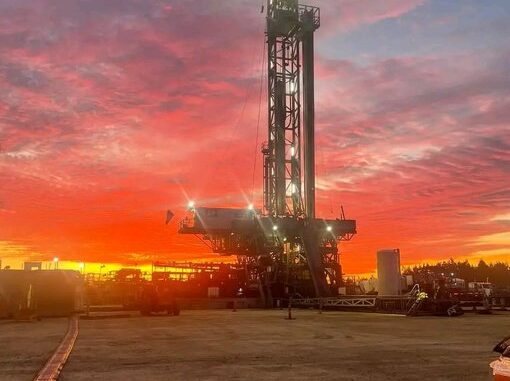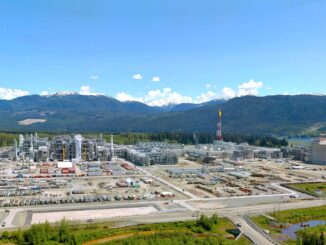
In a move that could reshape its portfolio and bolster its financial position, Canadian oil producer Baytex Energy Corp. is reportedly exploring the sale of its U.S. Eagle Ford shale assets for up to $3 billion. The news, first reported by Bloomberg on October 9, 2025, sent Baytex shares up about 4% in trading, reflecting investor optimism about the potential strategic shift. This article dives into the details of the proposed sale, reviews Baytex’s latest Q2 2025 earnings, incorporates updates from Bloomberg and other sources, and analyzes why this could be a positive development for Baytex investors.
Background on the Potential Sale
Baytex acquired its Eagle Ford operations in 2023 through a C$3.4 billion (approximately $2.5 billion USD at the time) all-stock deal for Ranger Oil Corp., significantly expanding its footprint in the prolific South Texas shale play.
The assets quickly became a cornerstone of Baytex’s production, contributing more than half of the company’s output—around 84,000 barrels of oil equivalent per day (boe/d) out of a total 147,000 boe/d in the most recent quarter. The Eagle Ford holdings, which include light oil and condensate production, were seen as a way to diversify Baytex’s heavy oil-focused Canadian operations and access premium pricing tied to U.S. Gulf Coast markets.
However, recent shifts in capital allocation suggest a reevaluation. In Q2 2025, Baytex reduced spending on its U.S. assets to $209 million from $238 million a year earlier, while increasing investments in its Alberta and Saskatchewan operations by nearly 50%. This pivot aligns with broader industry trends where producers are streamlining portfolios to focus on core, high-margin areas amid volatile commodity prices.
Bloomberg reported that Baytex is working with advisers to gauge interest in the assets, though discussions remain preliminary and no final decision has been made.
Potential buyers could include private equity firms or other shale operators looking to consolidate in the Eagle Ford, a basin known for its mature but still productive wells. The $3 billion valuation, if achieved, would represent a premium over the original acquisition cost, especially considering current market conditions with West Texas Intermediate (WTI) crude averaging around $64 per barrel in Q2 2025.Other sources echo the Bloomberg update. OilPrice.com noted that the sale could allow Baytex to refocus on its domestic heavy oil and Duvernay plays, where recent well results have been strong.
Seeking Alpha highlighted the potential for the deal to unlock value for investors, given Baytex’s current market capitalization of about $2.8 billion—meaning the Eagle Ford assets alone could fetch more than the entire company’s equity value.
World Oil reported that the Eagle Ford is projected to account for 57% of Baytex’s $1.2 billion exploration and development budget in 2025, underscoring the scale of the shift if the sale proceeds.
On X (formerly Twitter), the news generated buzz among energy investors. One post from @mantopawar57
pointed out the irony: “Sale of Eagle Ford Assets which could be valued at up to $3 billion. Current Total market cap of the company is 2.8 billion.”
Another from @wallstengine summarized: “Baytex Energy $BTE is exploring a potential $3 billion sale of its U.S. operations in the Eagle Ford shale of South Texas, according to Bloomberg.”
These reactions highlight market speculation that the deal could act as a catalyst for rerating Baytex’s stock.
Review of Baytex’s Q2 2025 Earnings
Baytex’s most recent earnings, released on July 31, 2025, for the quarter ended June 30, provide context for the potential sale. The company delivered solid results despite a challenging price environment, with WTI down to $63.74 per barrel from $80.57 a year earlier.Key financial highlights include:Production: Averaged 148,095 boe/d (84% oil and NGLs), up 2% per share year-over-year but down slightly from 154,194 boe/d in Q2 2024. The Eagle Ford contributed 83,928 boe/d (57% of total), with 14.9 net wells brought online and two successful refracs averaging 963 boe/d over 30 days—extending inventory life and improving efficiencies.
Tax Burden in 2025?
Revenue: Petroleum and natural gas sales totaled $886.6 million, down from $1,133.1 million in Q2 2024 due to lower prices. Net of blending and other expenses, sales were $824.2 million ($61.16/boe).
Net Income: $152 million ($0.20 per basic share), up from $104 million ($0.13 per share) in Q2 2024, driven by lower financing costs and foreign exchange gains.
Adjusted Funds Flow: $367 million ($0.48 per share), compared to $533 million ($0.65 per share) last year.
Free Cash Flow: A modest $3 million, down from $181 million, reflecting higher capital spending.
Debt and Liquidity: Net debt stood at $2.3 billion, reduced by 4% ($96 million) quarter-over-quarter through free cash flow and repurchases of US$41 million in long-term notes. Total debt was $2.2 billion, with a debt-to-EBITDA ratio of 1.1x. Credit facilities of US$1.1 billion were less than 25% drawn, maturing in June 2029.
Capital Expenditures: $357 million in exploration and development, with $209 million allocated to the Eagle Ford.
Operating Expenses: $11.95/boe, consistent year-over-year.
For full-year 2025, Baytex tightened guidance to the low end: production of about 148,000 boe/d (from 148,000-152,000 boe/d) and capex of $1.2 billion (from $1.2-$1.3 billion). At forward strip pricing (WTI ~$68/bbl), the company expects $400 million in free cash flow, weighted to the second half. Strategically, Baytex emphasized debt reduction, allocating 100% of free cash flow (after a $0.0225 quarterly dividend) to paying down debt, targeting $2 billion net debt by year-end.
The October 2025 investor presentation, dated October 1, reinforces this focus. It projects Eagle Ford production at ~82,000 boe/d for the year, contributing 55% of asset-level free cash flow. Long-term, Baytex aims for net debt of $1.5 billion (0.7x debt-to-EBITDA at $70 WTI), after which 75% of free cash flow would shift to shareholder returns like buybacks. The presentation highlights operational efficiencies, such as 11-12% cost reductions in drilling and completions, but makes no mention of asset sales—likely predating the Bloomberg report.
Why This Could Be a Good Thing for Baytex Investors
For Baytex shareholders, the potential Eagle Ford sale represents an opportunity to unlock significant value and accelerate financial recovery. Here’s a breakdown of the key benefits:Debt Reduction and Balance Sheet Strength: With net debt at $2.3 billion, a $3 billion sale could wipe out most or all of the company’s leverage. This would lower interest expenses (currently ~$180 million annually) and improve financial flexibility. Baytex has already reduced net debt by $1 billion since Q3 2023 through free cash flow, but the sale would fast-track its target of $1.5 billion net debt, potentially enabling earlier share buybacks or increased dividends. Seeking Alpha analysis notes that deleveraging could make Baytex more resilient to oil price volatility.
Portfolio Refocus on Higher-Return Canadian Assets: Divesting the Eagle Ford would allow Baytex to concentrate on its Alberta and Saskatchewan operations, which include high-margin heavy oil plays like Peavine and Peace River, and the emerging Pembina Duvernay. In Q2, Canadian heavy oil production rose 7% quarter-over-quarter, with record Duvernay well results (1,865 boe/d per well, 89% liquids). These assets require less capital intensity and benefit from improving Western Canadian Select (WCS) differentials. Bloomberg and OilPrice.com sources suggest this refocus could drive organic growth in Canada, where Baytex has over 10 years of inventory.
Value Unlock and Potential Premium: Acquired for ~$2.5 billion, the assets could now sell for $3 billion—a gain that exceeds Baytex’s current $2.8 billion market cap. This implies the market is undervaluing the company’s remaining Canadian portfolio. GuruFocus and TipRanks reports indicate the sale could lead to a stock rerating, with shares already up on the news.
In a low-price environment, monetizing mature assets like the Eagle Ford (with declining non-operated activity) makes sense to fund higher-return opportunities.
Enhanced Shareholder Returns: Post-sale, excess proceeds could support special dividends, accelerated buybacks (Baytex has repurchased 11% of shares since 2023), or reinvestment in core areas. The company’s five-year outlook projects $2-5 billion in cumulative free cash flow at $65-85 WTI, and a cleaner balance sheet would amplify this.
Of course, risks remain: The sale isn’t guaranteed, and lower oil prices could pressure valuations. Regulatory hurdles or buyer interest might also play a role. However, based on current guidance and market reactions, the potential divestiture aligns with Baytex’s strategy of disciplined capital allocation and value creation.
In summary, while the Eagle Ford has been a key driver since 2023, its sale could mark a turning point for Baytex, transforming it into a leaner, Canada-focused producer with a fortress balance sheet. Investors watching the energy sector should monitor developments closely as this story unfolds.
Tax Burden in 2025?
Crude Oil, LNG, Jet Fuel price quote
ENB Top News
ENB
Energy Dashboard
ENB Podcast
ENB Substack






